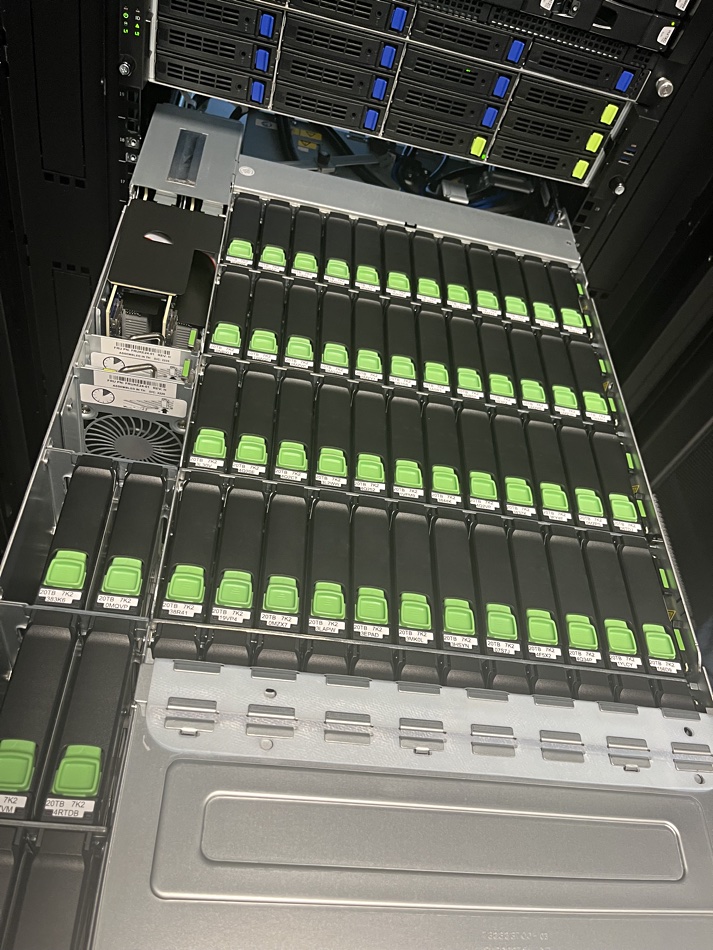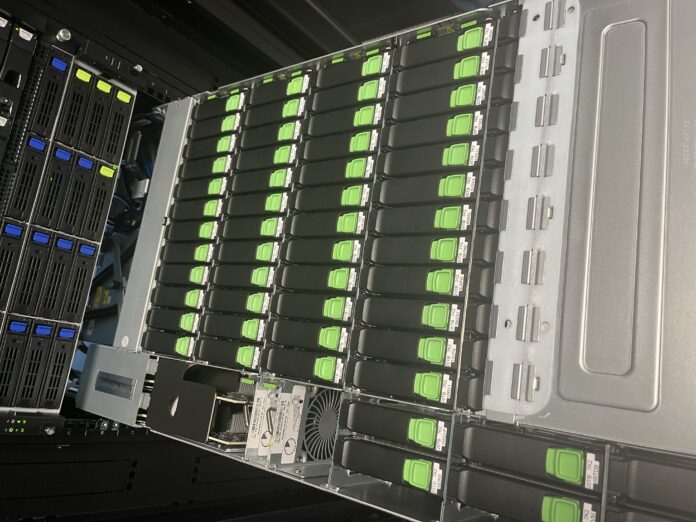The Seagate Corvault product is getting online autonomous drive regeneration and a HAMR capacity leap.
Corvault is Seagate’s smart JBOD chassis with up to 106 3.5-inch drives, and its firmware running in VelosCT ASIC controllers. It currently runs with 20TB drives and has ADAPT erasure coding to protect the drive’s content and recover from failed drives. It also has ADR (Autonomous Drive Regeneration) to recover from a failed platter surface or head in a 10-platter drive. The drive is taken offline, reset to not use the failed head or platter surface, and then returned to service with reduced capacity.
Dave Thompson, Seagate EMEA System sales manager, told a briefing in Amsterdam: “Corvault will have 30+TB HAMR drives in the second half of this year.”
That accords with Seagate CFO Gianluca Romano’s comment at an analyst’s meeting that 32TB HAMR drives are coming. A Corvault with 20TB drive has a capacity of 2.12PB while one with 32TB drives gets capacity jumping up to 3.37PB, a 59 percent increase. In effect Corvault will increase its capacity by half a petabyte a year as HAMR drives go from 32TB to 36TB, on to 40TB and then in 2026 reach the 50PB level.

Other array suppliers have ADAPT-like drive protection capabilities but ADR is a proprietary Seagate technology. It is only available with Seagate’s 18TB and larger drives due to specific controllers and firmware being needed. In effect ADR removes the drive from the ADAPT pool and “remanufactures” the entire drive minus the failed surface. Seagate says ADAPT is designed for this scenario and can determine which erasure-coded chunks in Corvault’s drives are affected by the range of logical blocks now “missing” and thus need to be recovered.
Corvault is also getting an evolutionary advance in ADR, with the intent to have the drive stay online during its regeneration. Envisage a platter surface or head failing. Both events mean that the data on the platter in question cannot be accessed. Such enhanced ADR means that the recovery of the data in the failed section, using parity data on other drives, is 95 percent faster than an entire drive recovery. This is simply because one surface is 5 percent of the total capacity in a 10-platter drive. This shorter rebuild time effectively reduces the critical windows of system vulnerability when a second failure could happen.
Such a repair-in-place concept can extend a drive’s working life and reduce a customer’s e-waste amount because the drive is not going to landfill.
We should note that ADR can cope with more than one head/platter surface failure. This all helps to keep Corvault’s data availability time higher by reducing downtime. Seagate indicated to us that there were thousands of deployed Corvault systems, with one customer having 55 of the chassis.








